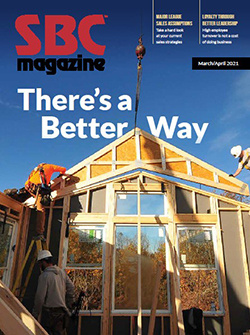AWC says 2x10s are Okay, but UL, Fire Service and Testing Say Otherwise
Editor's Note: The videos included in this article are part of the public record. They are taken from public testimony at the April 2016 ICC Committee Action Hearings in Louisville, Kentucky.
Since the 2012 IRC R501.3 (new section in the 2015 IRC R302.13) was adopted, SBCA has been very concerned about potential firefighter loss of life. This code provision was a political compromise crafted by the American Wood Council (AWC) and National Association of Homebuilders (NAHB) to offer to the fire service as an alternative to mandatory sprinklers.
of SBCA’s RB69 proposal to improve firefighter safety, and life safety overall.
In recent testimony to the ICC, Sam Francis of the AWC attests he was involved in crafting the original IRC R501.3 code language. In the video below, Francis outlines the coalition of interest groups led by AWC and NAHB who participated in drafting the code provision:
Mr. Francis claims SBCA was invited to participate but "they chose not to.” However, it was established years ago that SBCA had no knowledge of these discussions when they occurred at NAHB’s headquarters.
AWC’s main argument for the code provision as it was written was that the exception for 2x10s was based on historical precedent and the familiarity of the fire service with the attributes of solid sawn framing lumber. This is a position AWC affirms in recent email correspondence (emphasis added):
Chapter 3 of the International Residential Code (IRC) sets forth minimum requirements for the health, safety, and welfare of occupants in one- and two-family dwellings and townhouses. Section R302.13 provides for the minimum fire protection of floors that do not require a fire resistance rating. During the development of these provisions in the 2012 model code, historical precedent and the familiarity of the fire service with the attributes of solid sawn framing lumber led to choosing solid sawn lumber joists not less in size than 2"x10" as the benchmark for fire performance of wood floor assemblies [...] The code requires other floor systems to be protected by a minimum of one-half inch (1/2") layer of gypsum wallboard, five-eighths inch (5/8") wood structural panels, or equivalent. [...] For more information, see the FAQ and white paper available here.
The sponsor of the original code change, Sean DeCrane of the Cleveland Fire Department and International Association of Fire Fighters, spoke in support of SBCA’s RB69 proposal by stating succinctly in the video below that, “[…] we would love to protect every single floor because the research at UL is showing us the poor performance. As Sam [Francis of AWC] pointed out, we had an expectation of performance of older wood […] this new age wood is just not performing as well as it did historically,” and “as to the 100% design load that is what ASTM E119 requires.”
A failure to eliminate Exception 4 from IRC-12 R501.3 and IRC-15 R302.13 could lead to a firefighter falling through an unprotected 2x10 or Flak Jacket® coated I-joist floor and being maimed or killed due to an erroneous assumption the system adheres to the traditional “20-minute rule.” In contrast, by providing a ½” gypsum wallboard membrane ceiling to all floor systems, 20 minutes of actual performance time is likely to be present.
SBCA hopes the tragic fire in Wilmington, Delaware is a wakeup call for all in attendance at the ICC Code Hearings and that building officials in attendance listen to Sean DeCrane and OVERTURN THE IRC COMMITTEE and vote SBCA’s RB69 proposal to improve firefighter safety, and life safety overall.
For more information on the fire performance of floor systems, click here.


